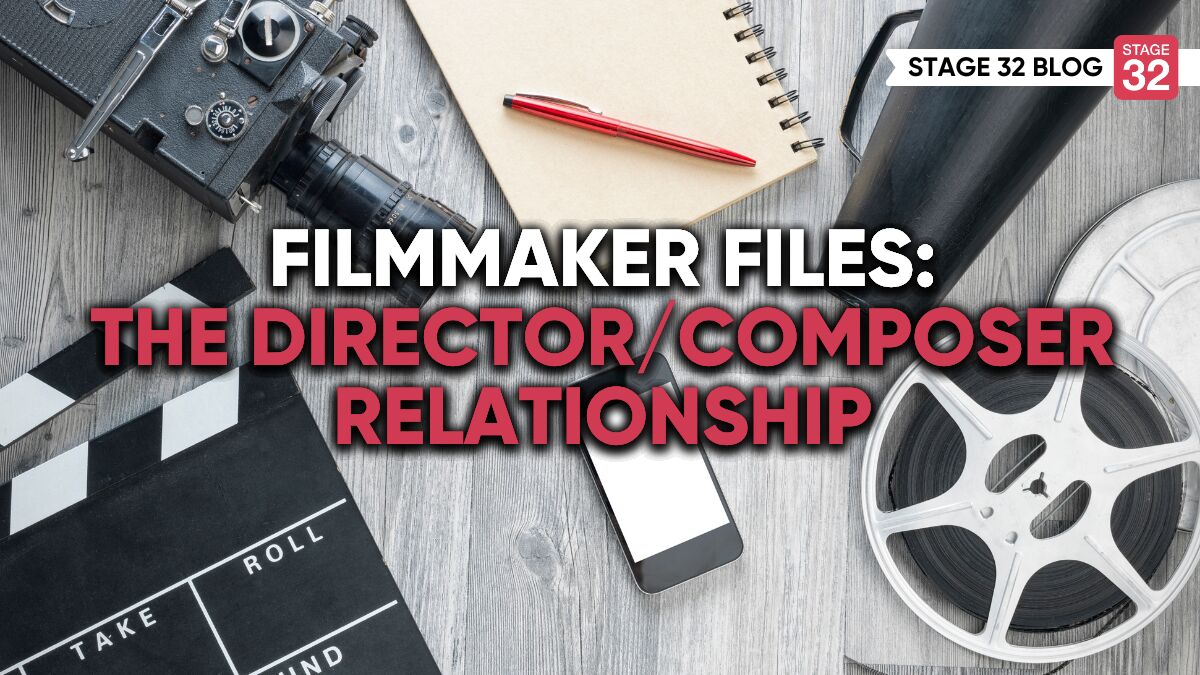The [Ultimate] 5-Step Sound Guide for Great Sound on Set
During my filmmaking career, I've run the gambit on all different sides of production. Back in Baltimore, I worked with skeleton crews writing, directing, and doing sound on my own productions. Since moving to Los Angeles I've found a lot of work on set sound mixing, and I wanted to give some easy, actionable steps that can help all filmmakers, at every budget level, get the best sound possible.
 My sound kit from “Sexy Dex.”
My sound kit from “Sexy Dex.”
1) Knowing The Tools
Most sound mixers start with what we call a “basic kit.”. This includes a mixer/recorder, a boom, and a couple of lavaliers (or lavs). This combination can work remarkably well in most situations.
- A mixer or recorder is the device you use to capture and save the audio on set. They are commonly differentiated by the number of tracks they can record. If you are recording from the boom and two lavs, you are using three tracks in the mixer.
- A “boom” is a microphone, usually a shotgun microphone, and is attached via shockmount to a boom pole. Think of it as the first wave in getting great sound. This mic, in best practice, should be close enough that the actor could swat it with their hand. (Please don’t. though.) In this position, the microphone will capture the sound as it comes out of the actors mouth.
- Lavaliers, or lavs, are the small, wireless microphones that are worn by the talent to pick up the dialogue and transmit it back to the mixer. The downside to lavs is that they are less reliable than a hardwired boom. From problems with reception, clothing noise, or mounting problems; lavs have a habit of causing more problems on set. But, when they work properly, it’s hard to beat the sound of a well placed lav and a proper boom pick up.
One might ask: what type of sound do I need for my project?
If you are just starting out, generally making short films and posting them online, you can probably get away with a boom and a mixer. Both can be very cheap to purchase, and cheaper still to rent. Using them, rather than recording sound via the built-in camera microphones, can make a huge and noticeable difference in sound quality.
Any project above the entry level should have a crew member dedicated to sound. Who you hire can make a huge difference in the final product, and that’s why interviewing and finding a reliable sound person is so crucial.
 In the Santa Monica mountains for “Running Shadow.”
In the Santa Monica mountains for “Running Shadow.”
2) Sound Problem VS. Location Problem
There have been a number of times when I have gotten to set and other members of the crew will tell me, “Sorry, you are going to have a rough day.”
I arrive to the location and there is some unforeseen occurrence. I've dealt with 30 mph winds, being surrounded by highways, shooting under the approach to LAX, and many more. I always try and make the most of every situation, but sometimes there is no way to work around construction across the street, or the guy playing Winger at impossible volumes while doing metal work in his garage.
Something that I have done for my own films, which I borrowed from searching for apartments, is the habit of spending some quiet time at the location before I book it. I had an apartment directly across the street from Camden Yards once, before I signed the lease, I took a book and sat in a chair during the Orioles game to try and determine if this would be acceptable noise for where I would live.
You can, and should, do the same thing with your locations. Try and line it up the best you can with the time of your shoot, day of the week, etc. Perhaps with this technique, and a little luck, you won’t schedule the recording of the pivotal moment of your piece during the weekly meet-up from the biker gang. The one that happens every Thursday across the street from your “perfect location.”
 On set for the feature film, “A Child’s Voice.”
On set for the feature film, “A Child’s Voice.”
3) How to Properly Budget for Sound
It’ll be 6:00 and I’ll get a panicked call from someone saying, “Cory, I got your name from Joe and he said you are the best. (Thanks, Joe.) Can you come in tomorrow on a pick-up day?”
“I sure can, what are the details?” I reply.
“Well, we really don’t have a huge budget. Can you mix and boom?” the producer asks.
It will go on like this, and the next day I will be on set. I’ll look around and see five people in the camera department, six actors to mic up, and a partridge in a pear tree (a known nightmare for sound). In this clearly fictional scenario, I find myself at craft services sampling from an assortment of hummus and wondering why they didn’t think of bringing in a boom op?
I understand the logic that one less person is one less paycheck, but boom operators are just like the first AC: they help keep things in focus. I get to worry about levels and mixing, and the boom operator can focus on keeping the mic in the right spot.
I have mixed and boomed a lot, and I will continue to because I genuinely love working on small budget projects that rarely can afford any more crew members than necessary. However, take it from a professional sound person: it’s a rob Peter to pay Paul problem. A boom operator in production can, and will, save you money in post-production. There are some incredible craftsmen in post sound, but I think what everyone wants at the end of the day is getting it right on set.
4) Things That Sound Can Do
I’m going to give you a little exercise. Put on one of your favorite movies and turn away from the screen. Instead of watching it for the 100th time, follow it with your ears.
In the best movies, you never even have to look. You can hear the pit of despair, you can hear New York City, and you even start picking up on little sound effects and foley.
Any time you turn around to try and figure out what’s happening, make a note. Did the movie fail to explain to me, on an auditory level, and now I have to see the picture to orient myself? How could you have improved it?
A movie I would really suggest for this exercise (and one which did a superb job in the sound department) is Baby Driver. This film melded all the different disciplines of sound so wonderfully. The first thing I thought, during my very first viewing, was that Edgar Wright really considered sound, even before production; and how it could elevate his movie to another level.
Going in to any production, think about the mise-en-scène as both a visual and audio exercise, and have a conversation with your sound person about how we can make that vision come to life.
 On set with “Indigo Valley” a feature by Jaclyn Bethany. Starring Rosie Day and Brandon Sklenar. Cinematography by Irene Gomez-Emilsson
On set with “Indigo Valley” a feature by Jaclyn Bethany. Starring Rosie Day and Brandon Sklenar. Cinematography by Irene Gomez-Emilsson
5) What Every Production Can Do To Improve the On Set Sound Experience
I wanted to give everyone a couple tips on my way out the door:
- First, never skimp on recording room tone. As someone who has edited a lot, it can totally save you. A good way to add some silence for room tone is to take your time before calling action. Everyone calls set, and instead of calling action right away, you get a couple seconds of room tone for the editor.
- Second, always have furniture pads available; or, in a pinch, a thick blanket. I can’t tell you the number of times a well-placed furniture pad has saved the day on a film set I was on. Furniture pads should get an honorary Oscar.
- Finally, speaking about sound killers, the sound mixers’ number one enemy are refrigerators. A fridge is a fantastic creature-comfort on set. Other locations may come with one that you didn’t request or need. But, before you call action, think of your sound mixer and unplug it. A bonus tip here though. If (when) you unplug it during a shoot, put your car keys or another object you can’t leave behind inside before you pull the plug. That way, before you leave, you will remember to plug it back in.
I love sound. It’s an amazing field with some great artists. To all filmmakers out there, befriend your sound department. Tell us about what you hope the final product sounds like, because with the right planning and a can-do attitude, we can make your story really sing. At the end of the day, sound is half the movie, and the more you work at it the better it can be.
Let's hear your thoughts in the comments below!
Got an idea for a post? Or have you collaborated with Stage 32 members to create a project? We'd love to hear about it. Email Emily at blog@stage32.com and let's get your post published!
Please help support your fellow Stage 32ers by sharing this on social. Check out the social media buttons at the top to share on Instagram @stage32 Twitter @stage32 Facebook @stage32 and LinkedIn @stage-32
| Filmmaker Files: The Director/ Composer Relationship |
| Coffee & Content: The Spielberg Look |
Search Stage 32 Blog
There are now 4041 blog posts for you to enjoy. Search them all by tags below.
Acting, Advice, Cinematography, Coffee & Content, Composing, Contests, Distribution, Featured, Filmmaking, Financing, Inspirational, Networking, Producing, Screenwriting, Success Stories, Tips, Trending,Relevant Tags
Recommended Articles

Coffee & Content: The Genius of Weapons and How to Know When Your Script Is Ready

A Practical Guide for Actors: Tips & Advice Every Performer Should Know

Insider Intel: The Studio War & The Rise of Indies

Insider Intel: 2025- Your Year of Breakthroughs (+ What's Coming in 2026)

Forbes Spotlights Stage 32 Certification!

Wearing Many Hats As A Creative

State of the Industry 2026 Now On-Demand: RB & Geoff Break Down What’s Next for Writers!

Happy Thanksgiving From Stage 32: We Are Thankful For YOU

Insider Intel: Packaging your Project- The Chicken or the Egg Dilemma






